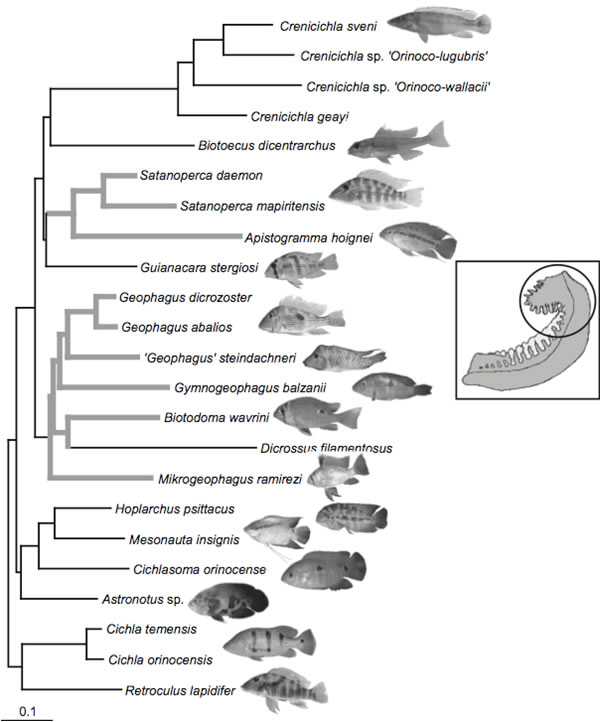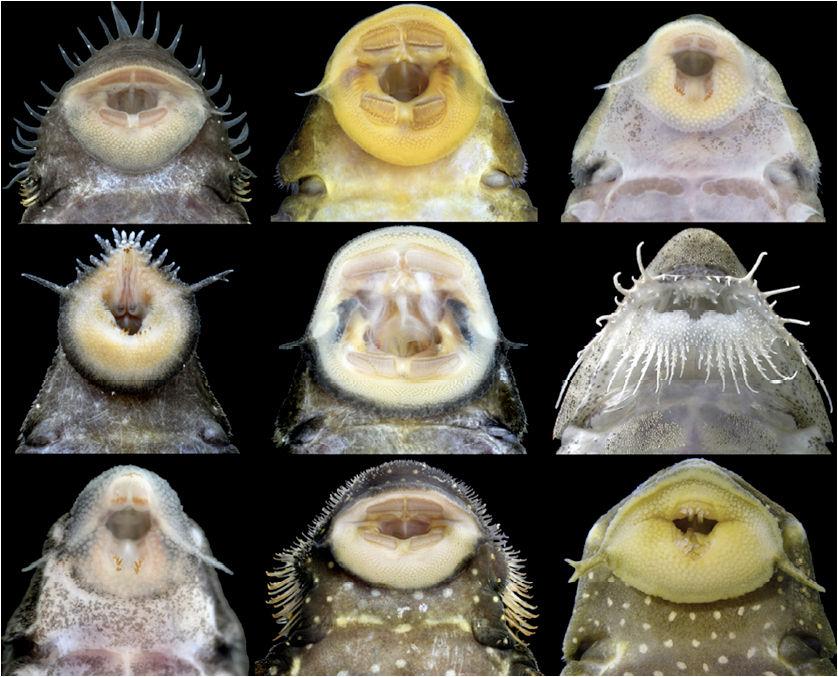
Evolutionary Ecology
Trophic Diversity in the Evolution and Community Assembly of Loricariid Catfishes
Nathan K. Lujan (Royal Ontario Museum), Kirk O. Winemiller, and Jonathan W. Armbruster (Auburn University)
The Neotropical catfish family Loricariidae contains over 830 species that display extraordinary variation in jaw morphologies but nonetheless reveal little interspecific variation from a generalized diet of detritus and algae. We collected δ13C and δ15N stable isotope signatures from 649 specimens representing 32 loricariid genera (82 species) from 19 local assemblages distributed across South America. Vectors were derived that represent distance and direction of each specimen relative to the δ15N/δ13C centroid for its local assemblage, and then examined the evolutionary diversification of loricariids across assemblage isotope niche space by regressing the mean vector for each genus in each assemblage onto a phylogeny reconstructed from osteological characters. Results indicated that loricariids consistently assimilate a restricted subset of the full basal resource spectrum available to fishes. Phylogenetic regression of assemblage centroid-standardized vectors for δ15N and δ13C revealed that loricariid genera with allopatric distributions in disjunct river basins partition basal resources in an evolutionarily conserved manner concordant with patterns of jaw morphological specialization and with evolutionary diversification via adaptive radiation. Trophic partitioning along elemental/nutritional gradients may provide an important mechanism of dietary segregation and evolutionary diversification among loricariids and perhaps other taxonomic groups of apparently generalist detritivores and herbivores. Evolutionary patterns among the Loricariidae reveal trophic niche conservatism, indicating that evolutionary lineage affiliation can be a strong predictor of how basal consumers segregate trophic niche space. Funding for the project was provided by the All Catfish Species (Siluriformes; NSF DEB-0315963), NSF grant OISE-1064578, the International Sportfish fund via the estate of George and Carolyn Kelso.

Biogeography of Fishes of the Upper Orinoco and Casiquiare rivers
Map of Amazon and Orinoco riversKirk O. Winemiller, Nathan Lujan, Hernan Lopez (Royal Ontario Museum), Donald Taphorn (University of the Western Llanos), Stuart Willis (George Washington University) & Others
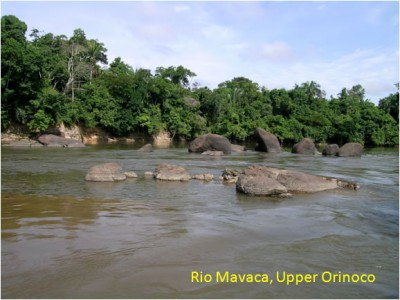
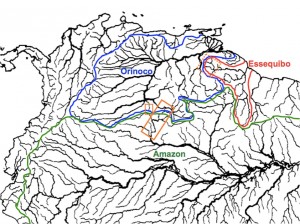
The Neotropical region contains the earth’s richest diversity of freshwater fishes. The Amazon and Orinoco rivers are two of the world’s major fluvial systems. The two basins are connected by the Casiquiare River, a natural channel that is over 300 km long. The largest natural waterway linking two major river basins, the Casiquiare offers biogeographers a unique opportunity to assess the manner in which ecology and historical geography have influenced fish distributions. Over its course the Casiquiare forms a marked hydrogeochemical gradient, ranging from clear waters near its bifurcation with the Orinoco to black waters in its lower reaches. Knowledge of the role the Casiquiare has played in shaping (and reshuffling) the distributions of fishes in northern South America may be key to a better understanding of the region’s fish diversity.

Ecomorphology and Adaptive Radiation of Benthic Feeding Geophagine Cichlids of South America
Hernán López-Fernández (Royal Ontario Museum), Carmen Montaña, Kirk Winemiller & Rodney Honeycutt (Pepperdine University)
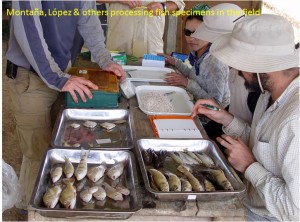
Montaña, López & others processing fish specimens in the fieldSouth American geophagine cichlids include 18 genera with a variety of morphologies and feeding habits. Based on phylogenetic evidence it has been hypothesized that Geophagini fulfills the requisites of an adaptive radiation. We are investigating this hypothesis by exploring the correlation between morphological traits and diet in most genera of Geophagini. In particular, a unique pharyngeal structure of Geophagini, the epibranchial lobe (EBL), has been hypothesized to enhance substrate sifting. We are using a genus-level phylogeny to test for general correlations between morphology and benthic diet in wild adult fishes. When diet-morphology correlations are analyzed without phylogenetic correction, the EBL in geophagines and a similar structure in the non-geophagine genus Retroculus are significantly correlated with a predominantly benthic diet. When the effect of phylogenetic similarity is accounted for using independent contrasts, benthic diet in geophagines and Retroculus is associated with morphological attributes similar to those of other substrate-sifting fishes. Although apparently associated with benthic feeding, the EBL does not fit the role of a “key innovation” driving increased diversification.
